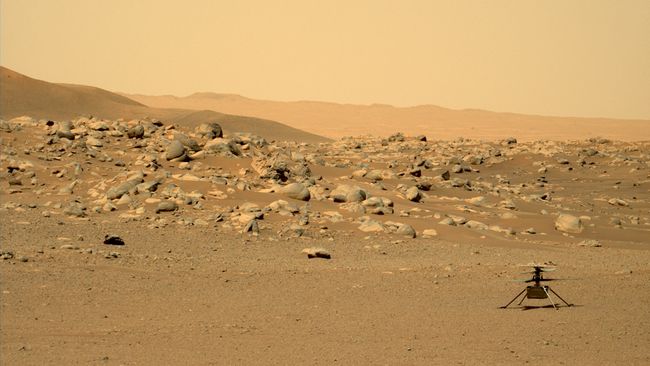Jakarta, Indonesia Sentinel — In an intriguing hypothesis, Dirk Schulze-Makuch, an astrobiologist from Technische Universität Berlin, suggests that NASA’s Viking mission may have inadvertently destroyed potential life forms on Mars during its experiments in the 1970s. His commentary, based on decades of reflection and recent research, raises questions about the methodology used to search for life on the Red Planet.
The Viking Mission and Its Approach
In 1976, NASA’s Viking program sent two landers to Mars to conduct experiments aimed at identifying signs of life. Central to the mission was the assumption that life on Mars, if it existed, would have characteristics similar to Earth’s biology—particularly the dependence on liquid water. The experiments mixed Martian soil samples with water and nutrients to encourage potential microbial activity.
However, Schulze-Makuch proposes that this approach might have been counterproductive. Instead of sustaining life, the introduction of water could have been fatal to Mars-based organisms, which may have evolved to thrive in extremely dry conditions rather than wet ones.
Mars and the Role of Salt in Survival
Schulze-Makuch points to Earth-based analogs to support his theory. In hyper-arid environments like Chile’s Atacama Desert, certain microbes depend on salts that absorb moisture from the atmosphere. This adaptation allows them to survive in conditions where liquid water is scarce or nonexistent.
He argues that Martian organisms, if present, may have similarly adapted to Mars’s arid environment, relying on salts for hydration. The sudden introduction of water by the Viking landers could have overwhelmed these organisms, effectively drowning them.
“Huge water influx can be devastating for organisms adapted to dry environments,” Schulze-Makuch explains. He cites evidence from Atacama, where rainstorms have killed 70-80% of bacteria adapted to hyper-arid conditions.
Rethinking Mars Exploration
This hypothesis challenges NASA’s long-standing “follow the water” strategy for exploring extraterrestrial life. Schulze-Makuch advocates for an alternative approach: “Follow the salt.” He suggests designing future missions with technologies capable of detecting and analyzing salt-based life forms, which may offer a better chance of discovering Martian life.
The idea of life relying on perchlorate salts—a chemical abundant on Mars—has gained traction in recent years. These salts, which can draw water vapor from the atmosphere, could potentially create microhabitats for life in an otherwise hostile environment.
Elon Musk Promises to Post Alien Evidence on X
A Call for New Missions
Nearly 50 years after Viking’s groundbreaking but controversial experiments, Schulze-Makuch believes it’s time for a new generation of missions focused on the unique ecosystems of Mars. This includes creating controlled environments that mimic the planet’s hyper-arid conditions rather than forcing terrestrial models onto Martian biology.
His commentary also underscores the importance of considering planetary environments on their own terms rather than through an Earth-centric lens. “It’s essential to refine our understanding of what life might look like in alien ecosystems,” he concludes.
While Schulze-Makuch’s theory remains speculative, it offers valuable insights for future exploration. His work highlights the delicate balance required in the search for life beyond Earth—a balance between scientific curiosity and an awareness of the impact our methods might have on alien ecosystems.
(Becky)

























